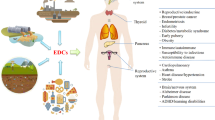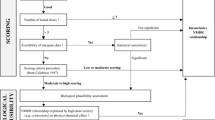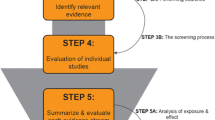Abstract
A keyword analysis was applied in this work to evaluate research trends of DDT (1,1,1-trichloro-2,2-bis(p-chlorophenyl)ethane) papers published between 1991 and 2005 in any journal of all the subject categories of the Science Citation Index compiled by ISI (Institute for Scientific Information, Philadelphia, USA). DDT was used as a keyword to search parts of titles, abstracts, or keywords. The published output analysis showed that DDT research steadily increased over the past 15 years and the annual publication output in 2005 was about twice that of 1991. The two peaks in 1997 and 2000 were closely related to two new research fields on DDT, namely the endocrine disruption and the persistent organic pollutants (POPs). A paper entitled “Persistent DDT metabolite p,p’-DDE is a potent androgen receptor antagonist” published in 1995 in Nature by Kelce et al. firstly discovered DDT’s toxicity for humans. As a result, public concerns regarding DDT ballooned and now play a key role in DDT research. Keyword analysis indicated that the research interest changed remarkably from 1991 to 2005. “Endocrine disruption” was one of the most frequently used author keywords in the period between 2002 and 2005 whilst it did not appear before 1997. The new conception of POPs showed the same trend. The whole paper published by India and Mexico ranked at 6th and 13th. That showed that DDT research is often related with DDT’s risk and benifits to humans.
Similar content being viewed by others
References
Aislabie, J. M., Richards, N. K., Boul, H.L. (1997), Microbial degradation of DDT and its residues — A review. New Zealand Journal of Agricultural Research, 40: 269–282.
Attaran, A., Roberts, D. R., Curtis, C. F., Kilama, W. L. (2000), Balancing risks on the backs of the poor. Nature Medicine, 6: 729–731.
Kelce, W. R., Stone, C. R., Laws, S. C., Gray, L. E., Kemppainen, J. A., Wilson, E. M. (1995), Persistent DDT metabolite p,p’-DDE is a potent androgen receptor antagonist. Nature, 375: 581–585.
Kuiper, G. G. J. M., Lemmen J. G., Carlsson B., Corton J. C., Safe S. H., Van Der Saag P. T., Van Der Burg P., Gustafsson J. A. (1998), Endocrinology, 139: 4252–4263.
Lallas, P. L. (2001), The Stockholm Convention on persistent organic pollutants. American Journal of International Law, 95: 692–708.
Murray, R. W. (2002), Forty years after Silent Spring, Analytical Chemistry, 74: 501A–501A.
Rogan, W. J., Chen, A. M. (2005), Health risks and benefits of bis(4-chlorophenyl)-1,1,1-trichloroethane (DDT). Lancet, 366: 763–773.
Turusov, V., Rakitsky, V., Tomatis, L. (2002), Dichlorodiphenyltrichloroethane (DDT): Ubiquity, persistence, and risks. Environmental Health Perspectives, 110: 125–128.
Vinkler, P. (1997), Relations of relative scientometric impact indicators. The relative publication strategy index. Sceintometrics, 40: 163–169.
World Health Organization (2001), Malaria in Africa. http://www.rbm.who.int/cmc_upload/0/000/015/370/RBMInfosheet_3.htm (accessed Oct. 27, 2006)
World Health Organization (2006), WHO gives indoor use of DDT a clean bill of health for controlling malaria. http://www.who.int/mediacentre/news/releases/2006/pr50/en/index.html (accessed Oct. 22, 2006)
Author information
Authors and Affiliations
Corresponding author
Rights and permissions
About this article
Cite this article
Yi, H., Xi, Z. Trends of DDT research during the period of 1991 to 2005. Scientometrics 75, 111–122 (2008). https://doi.org/10.1007/s11192-007-1828-3
Received:
Published:
Issue Date:
DOI: https://doi.org/10.1007/s11192-007-1828-3




